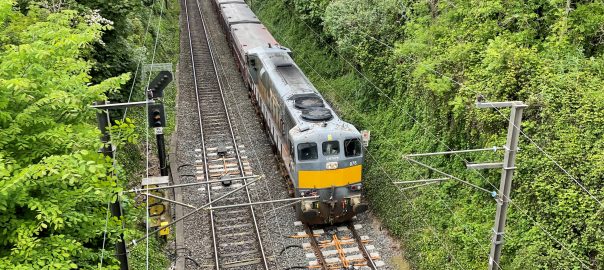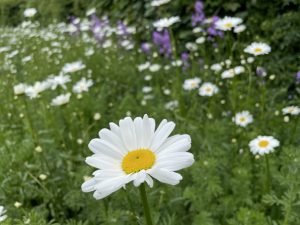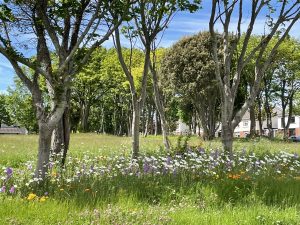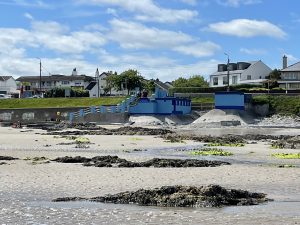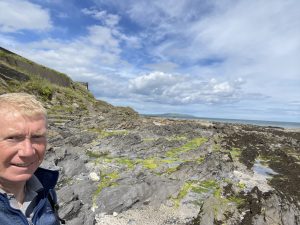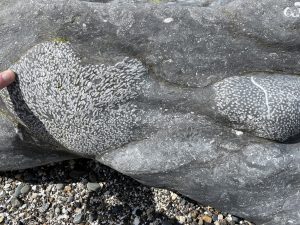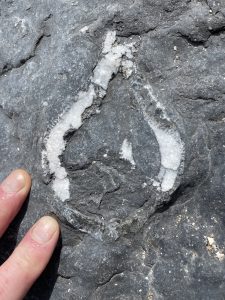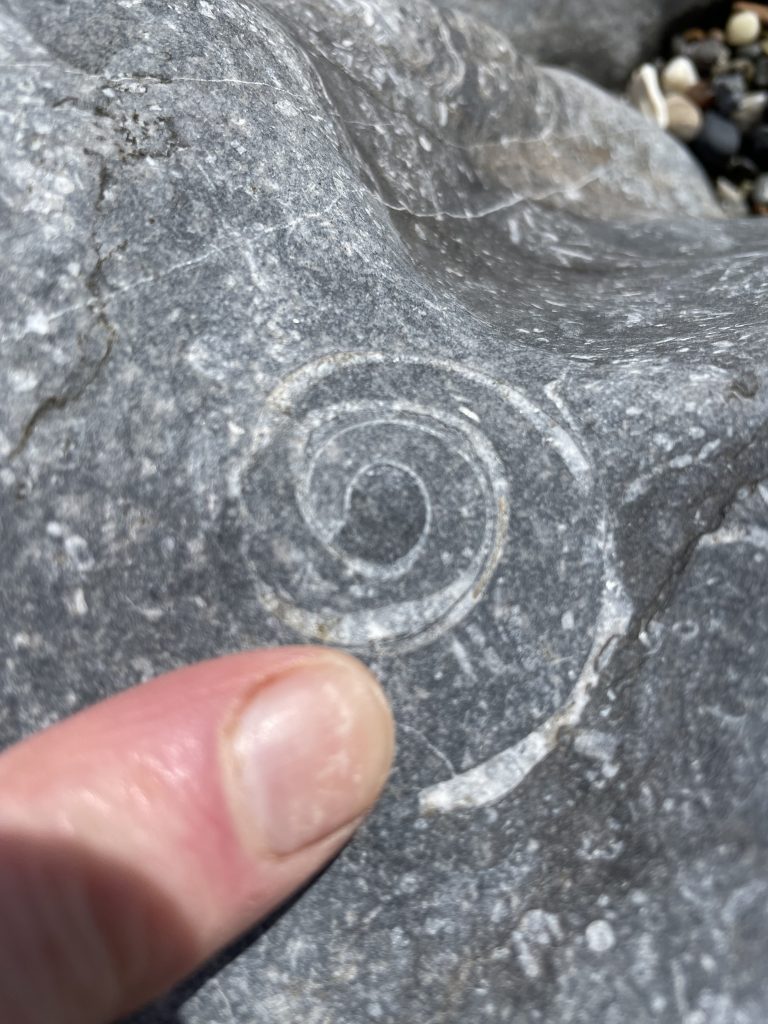Ireland day 0239. Wednesday 25 May 2022- Coastal
| Today’s summary | Woke up feeling particularly dopey this morning but Val was bright and breezy and ready for work so I dragged myself out of bed, did some housework and then walked to Portmarnock via a new route down the Bawn. Another lovely day – and a magnificent Class 71 and some good fossils spotted on the way too | ||||
| Today’s weather | Dry and bright. Mainly cloudy but some sunny intervals. Strong westerly wind. About 16C | ||||
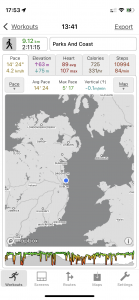 |
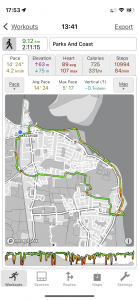 |
||||
| Today’s overview location (The blue mark shows the location of my route) |
Close-up location (The green line shows where I walked) (Click button below to download GPX of today’s walk as recorded, or see interactive map at bottom with elevations corrected): Coast via Castle and the Bawn |
||||
Commentary
Today I had one of those days, I admit, when I really wanted to blob around all day eating chocolate biscuits. I honestly have no idea why I was feeling so dopey but perhaps the fresh air and exercise in Wicklow – and maybe even the lingering after effects of Covid – were taking their toll. Anyway, Val was up bright and early getting ready for work, so I dragged myself out of bed, made some breakfast and packed lunches, and despatched Val off to the museum. Then I did what I had wanted to do all along – I sat down and ate some chocolate biscuits.
Eventually I realised I couldn’t carry on like this all day without turning into a lump of lard, so I put the biscuits away and got ready to go out. I had a few minor admin jobs to do first, but then headed off out into another bright blue-and-green world of sunshine and chlorophyll to see what the day had to offer.
There was a new path I’d found on the map – called the Bawn – that connects the back of the castle demesne with the road up to Paddy’s Hill, so I decided today would be an ideal day to check it out. It turned out to be a good plan – the castle grounds, as yesterday, were looking lovely, and brightly decked out with carefully cultivated “wild” flowers. And as I crossed the railway by bridge no. OBB26, I noticed the distant but unmistakable rumble of class 71 – so I hung around a couple of moments as the ore train from Navan thundered by – three hours late, I reckon – right under my feet. A magnificent sight, I must say.
And talking about railway bridges – if you recall from yesterday I was excited that the forthcoming repairs to OBB28 might mean that the leaking bridge by the embankment could be up for maintenance. But Val and I discovered on our walk last night that in fact that is bridge UBB29. A quick trip up to the station revealed that OBB28 is in fact the station footbridge. This is a bit of a shame as it means the repair works on Saturday night will be going on right outside our bedroom window. It’s also a pity that Iarnród Éireann aren’t going to be fixing the leak any time soon. It looks as if I might have to write that letter after all. But on a positive note, at least we learned something about the naming system for Irish railway bridges. Presumably they are numbered sequentially out from Dublin, with bridges going over the railway having the prefix “O”, and those going under the railway prefixed with “U”.
After all those excitements, I headed up Paddy’s Hill in Robswall Park and enjoyed the crystal clear views up as far as the Mourne mountains, to the north. In fact I thought I might be able to see the Welsh mountains too, as they aren’t much further away than the Mournes, but there was no sign of them at all on the easterly horizon, even when I scanned carefully with my binoculars. Curious.
The tide was fully out when I eventually reached the beach at Portmarnock, so I decided to see if I could walk all the way back – about 4km / 2½mi – along the shoreline, rather than on the boring tarmac of the promenade. In the end I managed it, though it was quite hard going over the rocky fossiliferous seracs which punctuate the beach. So I took it fairly slowly, as I also wanted to have a good look at the fascinating fossils that were preserved in the limestone. If you’re at all palaeontoligically inclined, the beach is an amazing place. Photos of some of the more interesting specimens are included below.
Once I got back to the flat, I made a hasty sandwich dinner for Val – as soon as she got back from work, she needed a quick meal then we headed out to the airport. She’s going back to the UK for a couple of days on some family business and will be back on Saturday. So I’ll have the place to myself but will have to work extra hard to avoid the seductive attractions of unconstrained chocolate biscuit eating.
Come back tomorrow and see if I’ve managed the first day of the self-imposed biscuit restraint trial successfully!
Today’s photos (click to enlarge)
Interactive map
(Elevations corrected at GPS Visualizer: Assign DEM elevation data to coordinates )
Max elevation: 49 m
Min elevation: 0 m
Total climbing: 122 m
Total descent: -120 m
Total time: 02:11:08
